COURSE TITLE: ENTREPRENEURSHIP
1: convert your business idea to a business plan, similar to the business plan content and business plan example described below. Fill in all the headings in the content of the business plan in accordance with your business idea and in consistency.
2: Prepare a draft or a shape that will contain the business model subheadings, similar to the business model content described below.
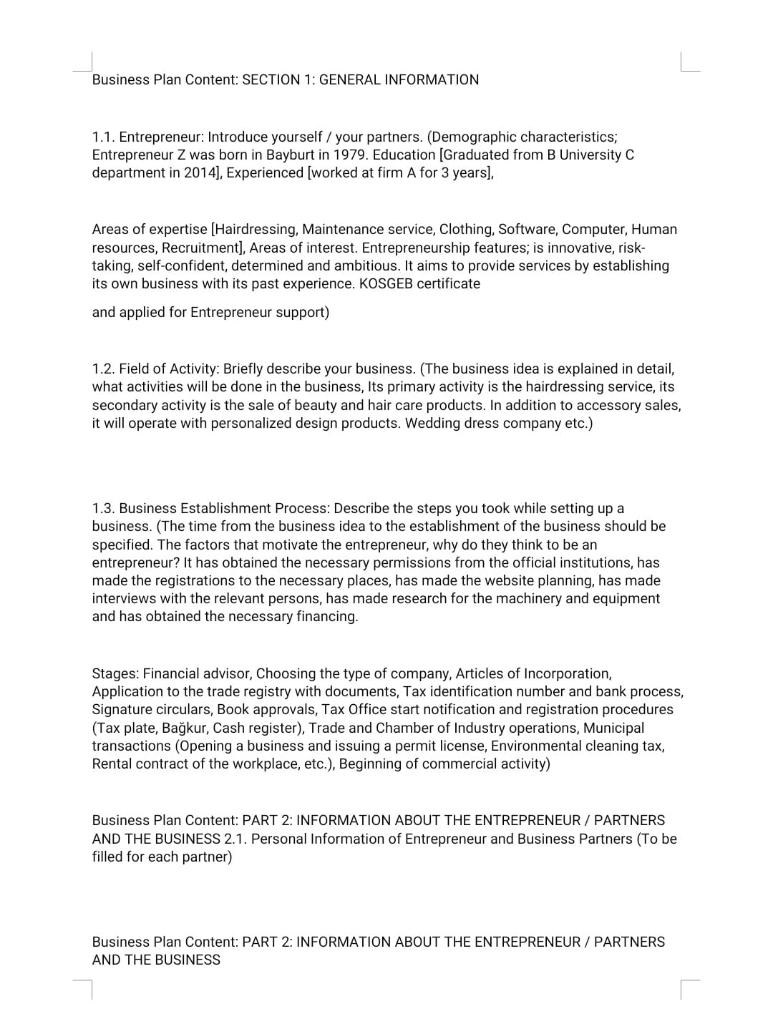
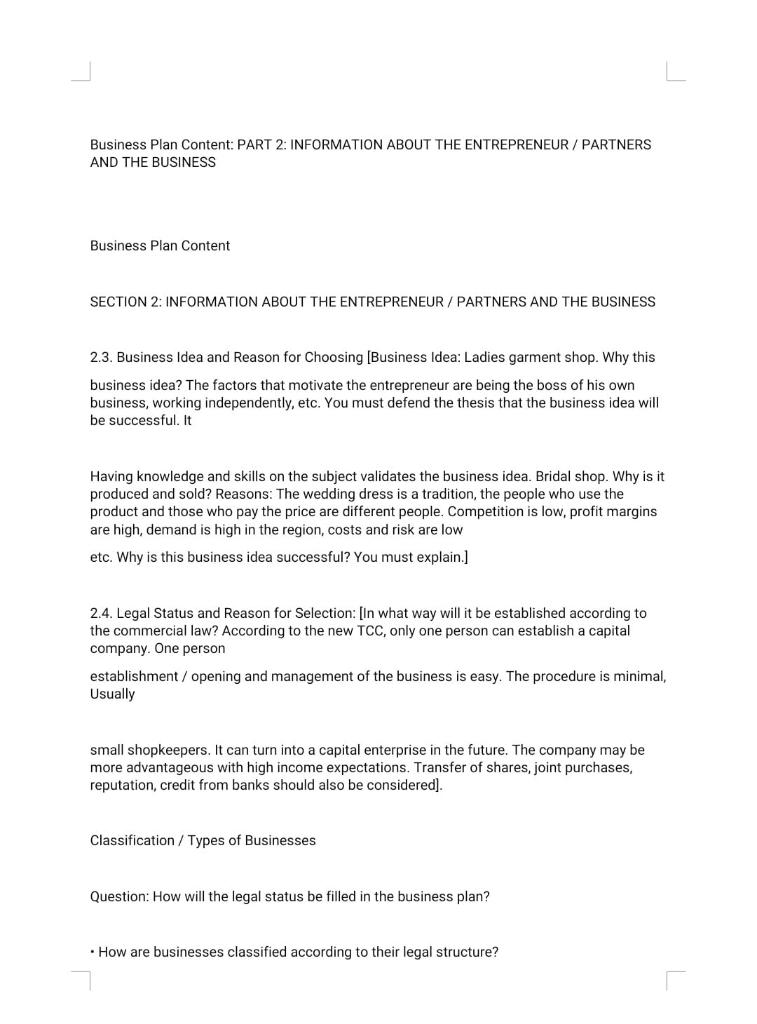
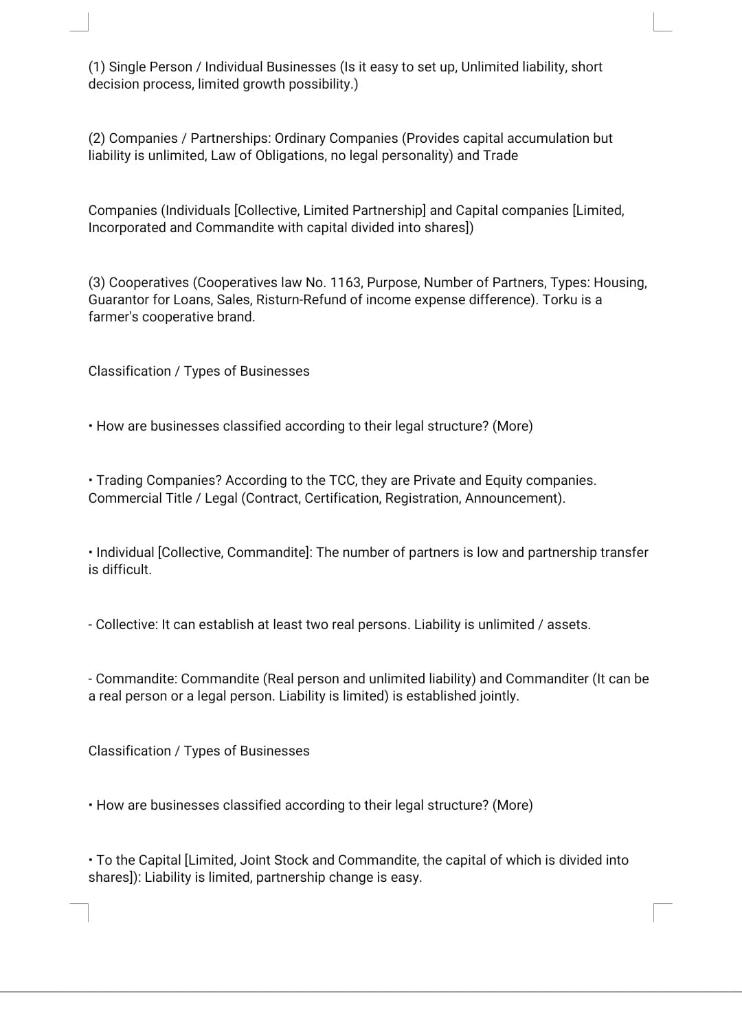
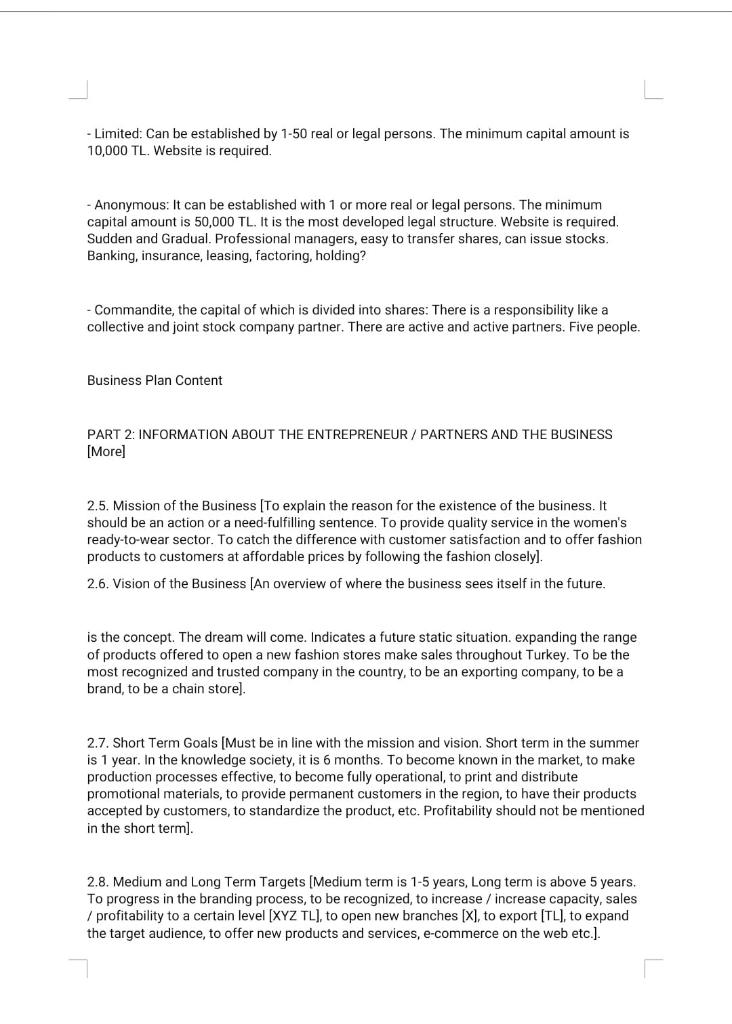
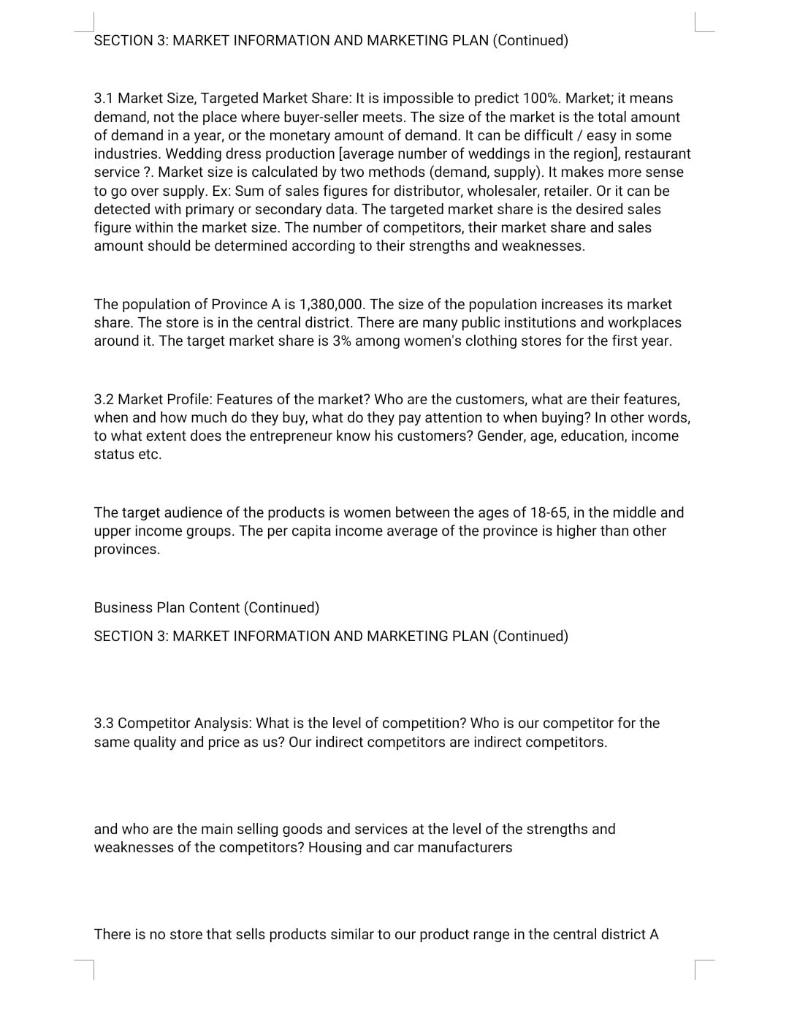
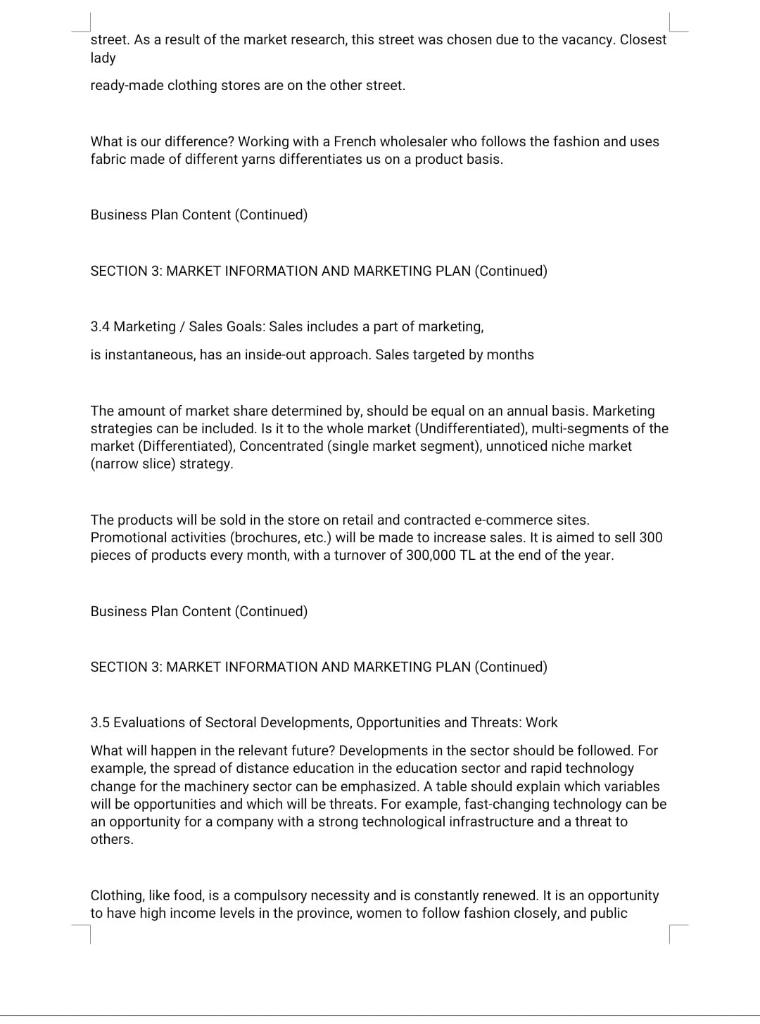
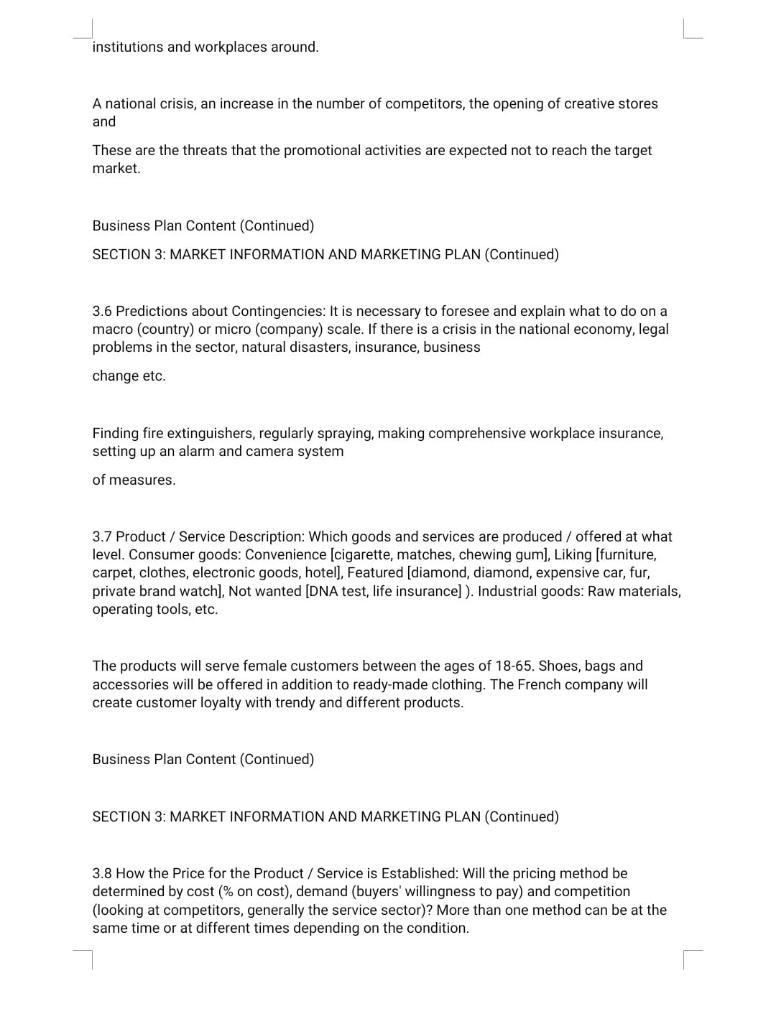

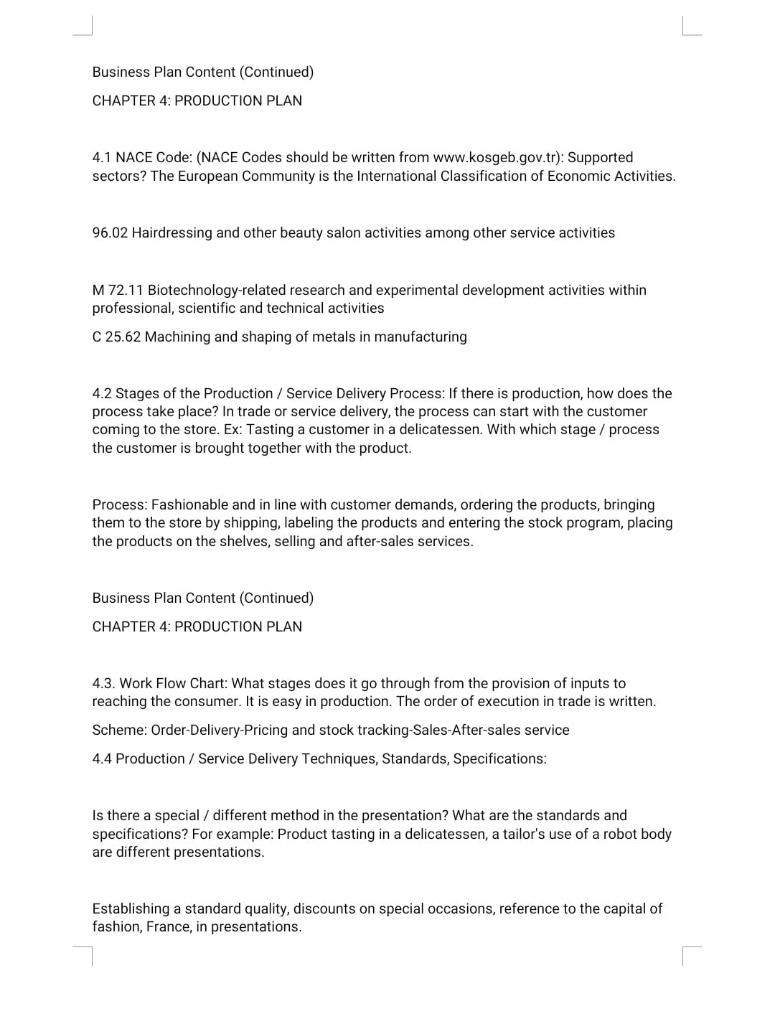
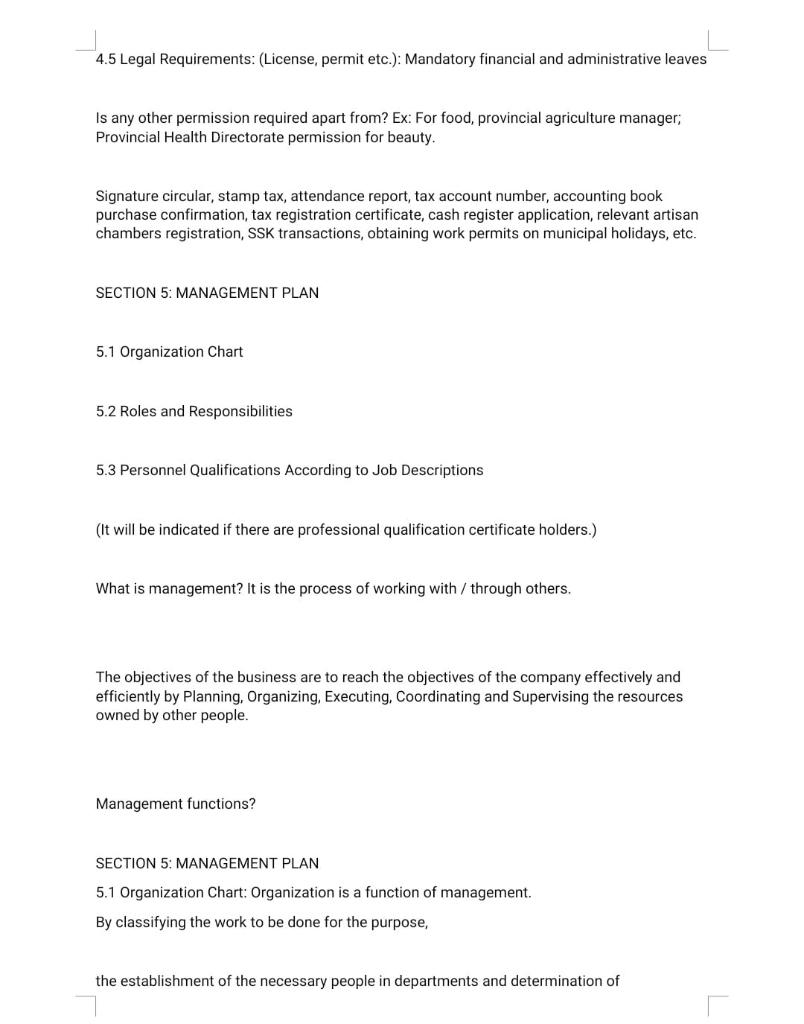
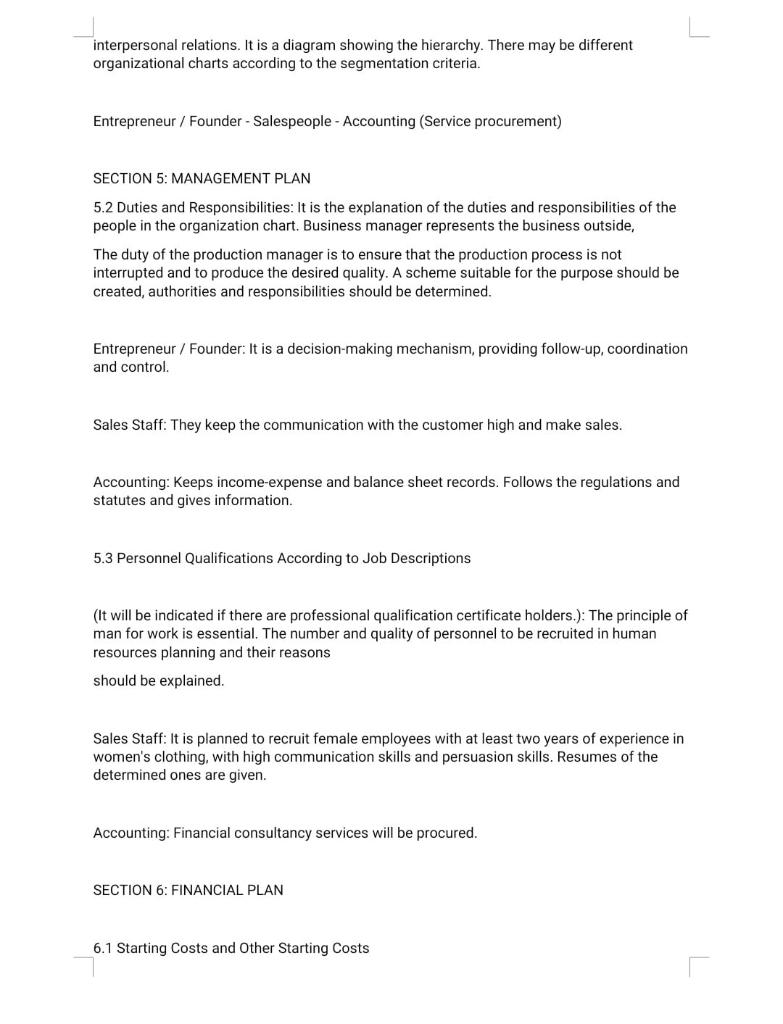
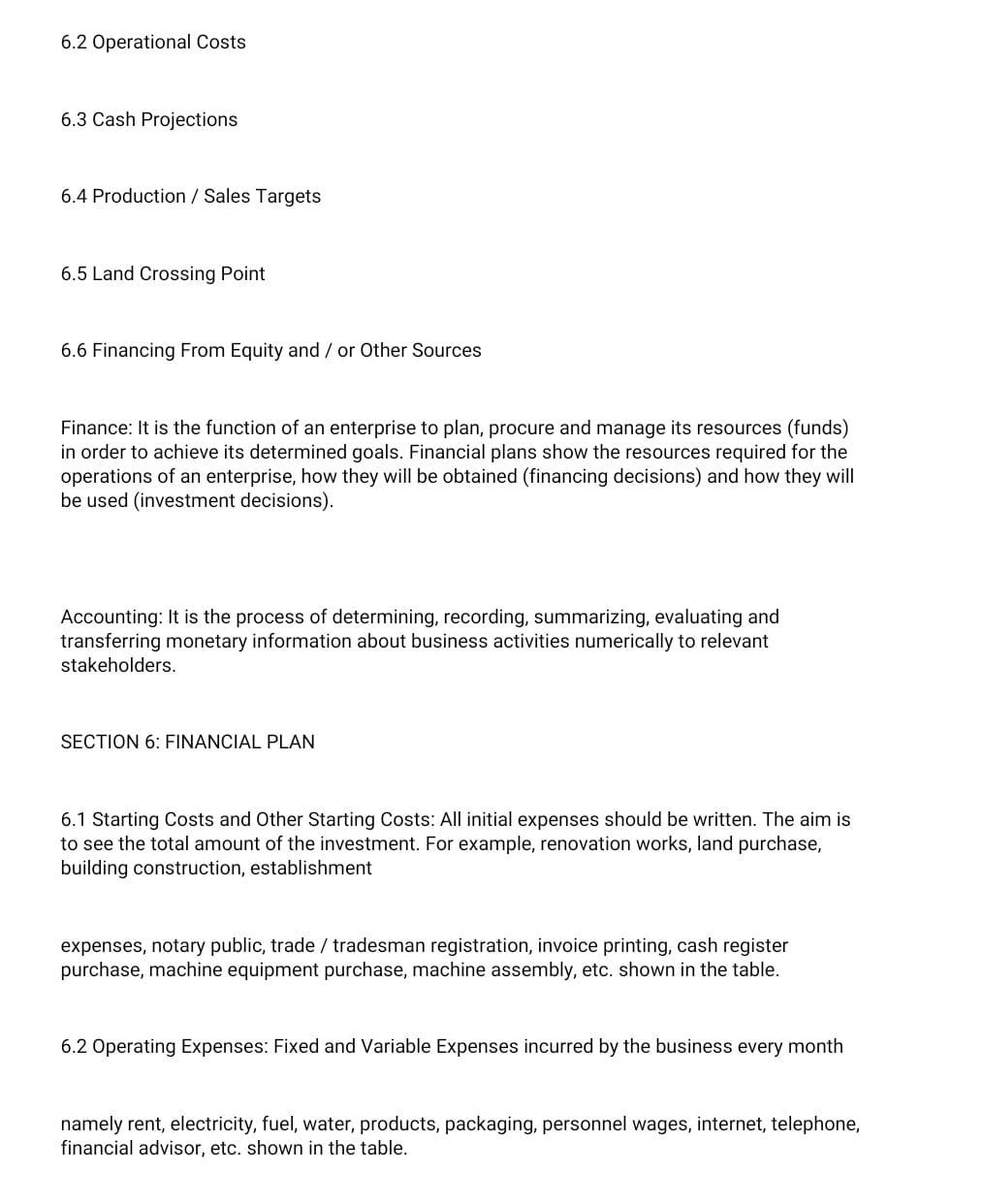

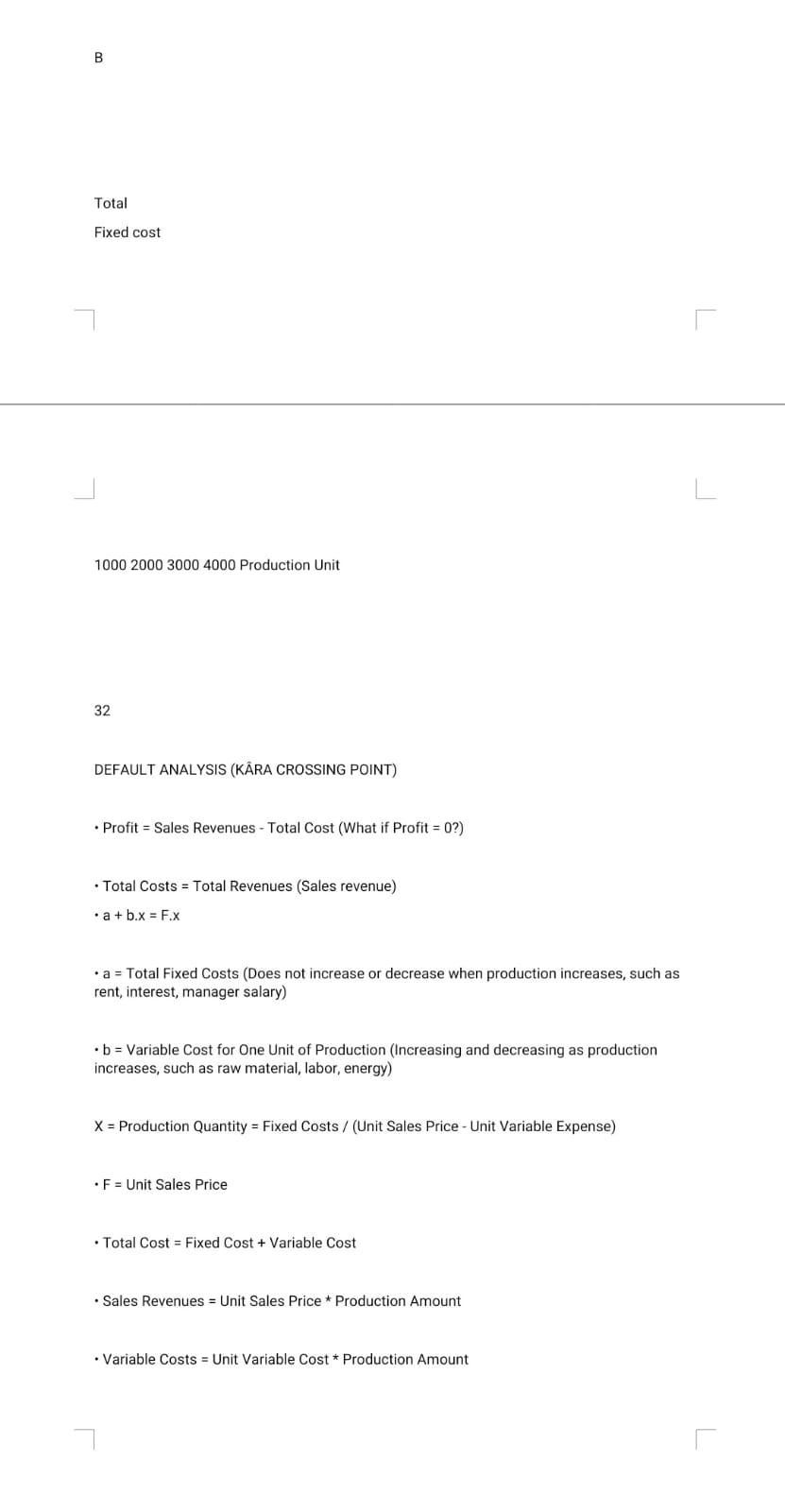
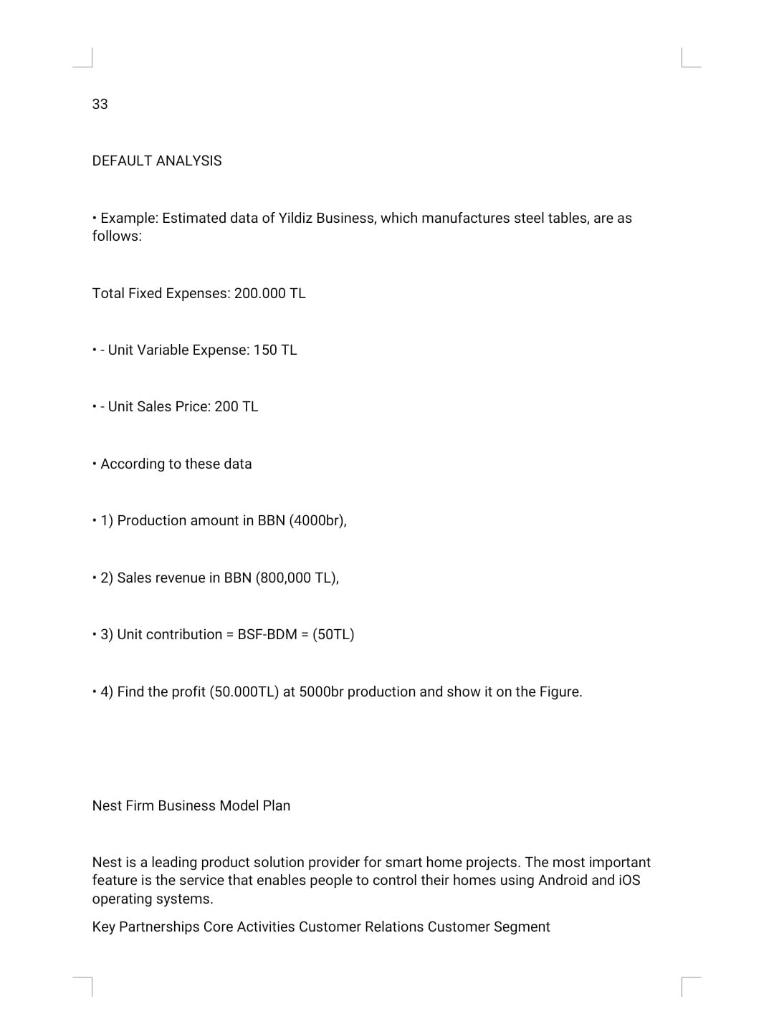
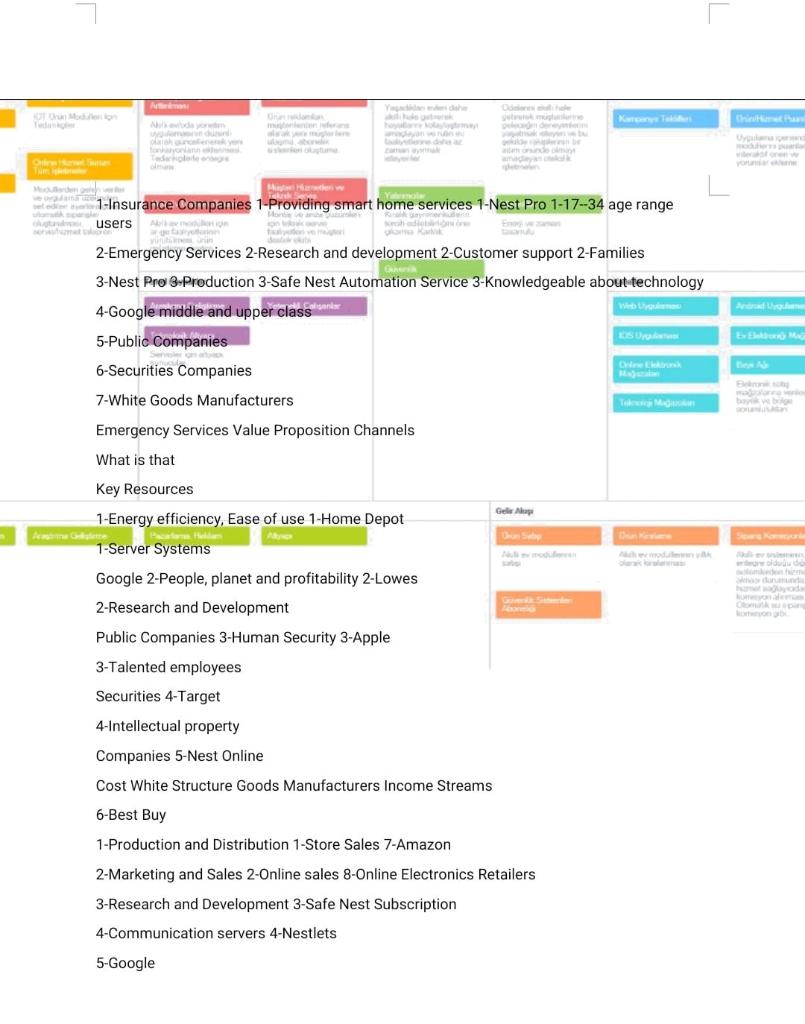
Business Plan Content: SECTION 1: GENERAL INFORMATION 1.1. Entrepreneur: Introduce yourself / your partners. (Demographic characteristics; Entrepreneur Z was born in Bayburt in 1979. Education (Graduated from B University C department in 2014), Experienced (worked at firm A for 3 years). Areas of expertise [Hairdressing, Maintenance service, Clothing, Software, Computer, Human resources, Recruitment), Areas of interest. Entrepreneurship features; is innovative, risk- taking, self-confident, determined and ambitious. aims to provide services by establishing its own business with its past experience. KOSGEB certificate and applied for Entrepreneur support) 1.2. Field of Activity: Briefly describe your business. (The business idea is explained in detail, what activities will be done in the business, Its primary activity is the hairdressing service, its secondary activity is the sale of beauty and hair care products. In addition to accessory sales, it will operate with personalized design products. Wedding dress company etc.) 1.3. Business Establishment Process: Describe the steps you took while setting up a business. (The time from the business idea to the establishment of the business should be specified. The factors that motivate the entrepreneur, why do they think to be an entrepreneur? It has obtained the necessary permissions from the official institutions, has made the registrations to the necessary places, has made the website planning, has made interviews with the relevant persons, has made research for the machinery and equipment and has obtained the necessary financing. Stages: Financial advisor, Choosing the type of company, Articles of Incorporation, Application to the trade registry with documents, Tax identification number and bank process, Signature circulars, Book approvals, Tax Office start notification and registration procedures (Tax plate, Bakur, Cash register), Trade and Chamber of Industry operations, Municipal transactions (Opening a business and issuing a permit license, Environmental cleaning tax, Rental contract of the workplace, etc.), Beginning of commercial activity) Business Plan Content: PART 2: INFORMATION ABOUT THE ENTREPRENEUR / PARTNERS AND THE BUSINESS 2.1. Personal Information of Entrepreneur and Business Partners (To be filled for each partner) Business Plan Content: PART 2: INFORMATION ABOUT THE ENTREPRENEUR / PARTNERS AND THE BUSINESS Business Plan Content: PART 2: INFORMATION ABOUT THE ENTREPRENEUR / PARTNERS AND THE BUSINESS Business Plan Content SECTION 2: INFORMATION ABOUT THE ENTREPRENEUR / PARTNERS AND THE BUSINESS 2.3. Business Idea and Reason for Choosing (Business Idea: Ladies garment shop. Why this business idea? The factors that motivate the entrepreneur are being the boss of his own business, working independently, etc. You must defend the thesis that the business idea will be successful. It Having knowledge and skills on the subject validates the business idea. Bridal shop. Why is it produced and sold? Reasons: The wedding dress is a tradition, the people who use the product and those who pay the price are different people. Competition is low, profit margins are high, demand is high in the region, costs and risk are low etc. Why is this business idea successful? You must explain.] 2.4. Legal Status and Reason for Selection: [In what way will it be established according to the commercial law? According to the new TCC, only one person can establish a capital company. One person establishment / opening and management of the business is easy. The procedure is minimal, Usually small shopkeepers. It can turn into a capital enterprise in the future. The company may be more advantageous with high income expectations. Transfer of shares, joint purchases, reputation, credit from banks should also be considered). Classification / Types of Businesses Question: How will the legal status be filled in the business plan? How are businesses classified according to their legal structure? (1) Single Person / Individual Businesses (Is it easy to set up, Unlimited liability, short decision process, limited growth possibility.) (2) Companies / Partnerships: Ordinary Companies (Provides capital accumulation but liability is unlimited, Law of Obligations, no legal personality) and Trade Companies (Individuals Collective, Limited Partnership) and Capital companies [Limited, Incorporated and Commandite with capital divided into shares]) (3) Cooperatives (Cooperatives law No. 1163, Purpose, Number of Partners, Types: Housing, Guarantor for Loans, Sales, Risturn-Refund of income expense difference). Torku is a farmer's cooperative brand, Classification / Types of Businesses How are businesses classified according to their legal structure? (More) Trading Companies? According to the TCC, they are Private and Equity companies. Commercial Title / Legal (Contract, Certification, Registration, Announcement). Individual Collective, Commandite]: The number of partners is low and partnership transfer is difficult. Collective: It can establish at least two real persons. Liability is unlimited / assets. Commandite: Commandite (Real person and unlimited liability) and Commanditer (It can be a real person or a legal person. Liability is limited) is established jointly. Classification / Types of Businesses How are businesses classified according to their legal structure? (More) To the Capital (Limited, Joint Stock and Commandite, the capital of which is divided into shares]): Liability is limited, partnership change is easy. - Limited: Can be established by 1-50 real or legal persons. The minimum capital amount is 10,000 TL. Website is required. - Anonymous: It can be established with 1 or more real or legal persons. The minimum capital amount is 50,000 TL. It is the most developed legal structure. Website is required. Sudden and Gradual. Professional managers, easy to transfer shares, can issue stocks, Banking, insurance, leasing, factoring, holding? Commandite, the capital of which is divided into shares: There is a responsibility like a collective and joint stock company partner. There are active and active partners. Five people. Business Plan Content PART 2: INFORMATION ABOUT THE ENTREPRENEUR / PARTNERS AND THE BUSINESS [More] 2.5. Mission of the Business (To explain the reason for the existence of the business. It should be an action or a need-fulfilling sentence. To provide quality service in the women's ready-to-wear sector. To catch the difference with customer satisfaction and to offer fashion products to customers at affordable prices by following the fashion closely). 2.6. Vision of the Business [An overview of where the business sees itself in the future. is the concept. The dream will come. Indicates a future static situation expanding the range of products offered to open a new fashion stores make sales throughout Turkey. To be the most recognized and trusted company in the country, to be an exporting company, to be a brand, to be a chain store). 2.7. Short Term Goals (Must be in line with the mission and vision. Short term in the summer is 1 year. In the knowledge society, it is 6 months. To become known in the market, to make production processes effective, to become fully operational, to print and distribute promotional materials, to provide permanent customers in the region, to have their products accepted by customers, to standardize the product, etc. Profitability should not be mentioned in the short term). 2.8. Medium and Long Term Targets (Medium term is 1-5 years, Long term is above 5 years. To progress in the branding process, to be recognized, to increase / increase capacity, sales / profitability to a certain level (XYZ TL), to open new branches [X], to export (TL), to expand the target audience, to offer new products and services, e-commerce on the web etc.). SECTION 3: MARKET INFORMATION AND MARKETING PLAN (Continued) 3.1 Market Size, Targeted Market Share: It is impossible to predict 100%. Market; it means demand, not the place where buyer-seller meets. The size of the market is the total amount of demand in a year, or the monetary amount of demand. It can be difficult / easy in some industries. Wedding dress production (average number of weddings in the region), restaurant service ?. Market size is calculated by two methods (demand, supply). It makes more sense to go over supply. Ex: Sum of sales figures for distributor, wholesaler, retailer. Or it can be detected with primary or secondary data. The targeted market share is the desired sales figure within the market size. The number of competitors, their market share and sales amount should be determined according to their strengths and weaknesses. The population of Province A is 1,380,000. The size of the population increases its market share. The store is in the central district. There are many public institutions and workplaces around it. The target market share is 3% among women's clothing stores for the first year. 3.2 Market Profile: Features of the market? Who are the customers, what are their features, when and how much do they buy, what do they pay attention to when buying? In other words, to what extent does the entrepreneur know his customers? Gender, age, education, income status etc. The target audience of the products is women between the ages of 18-65, in the middle and upper income groups. The per capita income average of the province is higher than other provinces. Business Plan Content (Continued) SECTION 3: MARKET INFORMATION AND MARKETING PLAN (Continued) 3.3 Competitor Analysis: What is the level of competition? Who is our competitor for the same quality and price as us? Our indirect competitors are indirect competitors. and who are the main selling goods and services at the level of the strengths and weaknesses of the competitors? Housing and car manufacturers There is no store that sells products similar to our product range in the central district A street. As a result of the market research, this street was chosen due to the vacancy. Closest lady ready-made clothing stores are on the other street. What is our difference? Working with a French wholesaler who follows the fashion and uses fabric made of different yarns differentiates us on a product basis. Business Plan Content (Continued) SECTION 3. MARKET INFORMATION AND MARKETING PLAN (Continued) 3.4 Marketing / Sales Goals: Sales includes a part of marketing, is instantaneous, has an inside-out approach. Sales targeted by months The amount of market share determined by, should be equal on an annual basis. Marketing strategies can be included. Is it to the whole market (Undifferentiated), multi-segments of the market (Differentiated), Concentrated (single market segment), unnoticed niche market (narrow slice) strategy. The products will be sold in the store on retail and contracted e-commerce sites. Promotional activities (brochures, etc.) will be made to increase sales. It is aimed to sell 300 pieces of products every month, with a turnover of 300,000 TL at the end of the year. Business Plan Content (Continued) SECTION 3: MARKET INFORMATION AND MARKETING PLAN (Continued) 3.5 Evaluations of Sectoral Developments, Opportunities and Threats: Work What will happen in the relevant future? Developments in the sector should be followed. For example, the spread of distance education in the education sector and rapid technology change for the machinery sector can be emphasized. A table should explain which variables will be opportunities and which will be threats. For example, fast-changing technology can be an opportunity for a company with a strong technological infrastructure and a threat to others. Clothing, like food, is a compulsory necessity and is constantly renewed. It is an opportunity to have high income levels in the province, women to follow fashion closely, and public institutions and workplaces around. A national crisis, an increase in the number of competitors, the opening of creative stores and These are the threats that the promotional activities are expected not to reach the target market. Business Plan Content (Continued) SECTION 3: MARKET INFORMATION AND MARKETING PLAN (Continued) 3.6 Predictions about Contingencies: It is necessary to foresee and explain what to do on a macro (country) or micro (company) scale. If there is a crisis in the national economy, legal problems in the sector, natural disasters, insurance, business change etc. Finding fire extinguishers, regularly spraying, making comprehensive workplace insurance, setting up an alarm and camera system of measures. 3.7 Product/Service Description: Which goods and services are produced / offered at what level. Consumer goods: Convenience (cigarette, matches, chewing gum), Liking (furniture, carpet, clothes, electronic goods, hotel), Featured (diamond, diamond, expensive car, fur, private brand watch], Not wanted (DNA test, life insurance]). Industrial goods: Raw materials, operating tools, etc. The products will serve female customers between the ages of 18-65. Shoes, bags and accessories will be offered in addition to ready-made clothing. The French company will create customer loyalty with trendy and different products. Business Plan Content (Continued) SECTION 3: MARKET INFORMATION AND MARKETING PLAN (Continued) 3.8 How the price for the Product/Service is Established: Will the pricing method be determined by cost (% on cost), demand (buyers' willingness to pay) and competition (looking at competitors, generally the service sector)? More than one method can be at the same time or at different times depending on the condition. Product prices are determined according to market conditions, competitor product prices and operating expenses. 3.9 Location Selection: Where will the establishment place of the business be? It may be close to the market (demand), competitor or raw material. If we are going to trade and easily sell goods to the market, if we are going to sell admirable goods, it may be close to the competitor, and the featured goods may be in a separate place on its own. In production enterprises, it may be close to the raw material. Transport networks, developing regions, costs, etc. The store has become operational in A province, B district and C avenue. The lack of similar businesses in the environment, a market gap noticed after market analysis, high customer potential and suitable rent were effective in the choice of location. Business Plan Content (Continued) SECTION 3: MARKET INFORMATION AND MARKETING PLAN (Continued) 3.10 Customer Access Channels: These are the distribution channels. Will the intermediary be used to deliver the goods and services to the customer? Direct and indirect marketing. Trade and There may be direct distribution (mediated) in the service sector and indirect distribution in the production sector. The customer will be reached through the environment acquired before the store is opened, direct sales from the store, contracted e-commerce sites, flyers, radio advertisements and social media tools. 3.11 Product/Service Promotion Plan: What are promotion and promotion activities and tools? Advertising (newspaper, radio, TV, billboard / bulletin board), public relations (good relations), personal sales (sales representative) and sales-enhancing effort (promotion / discount, gift voucher]? Personal sale (Water purifier) if the product is featured and high in value. Nowadays, there can also be creative applications and ideas with social media. 2 marketing staff will be hired by the end of the first year. Trademark registration will be made for the store name and logo. For local radio, minibus TV advertisements and newspaper ads an annual budget of 10.000 TL will be allocated. Business Plan Content (Continued) CHAPTER 4: PRODUCTION PLAN 4.1 NACE Code: (NACE Codes should be written from www.kosgeb.gov.tr): Supported sectors? The European Community is the International Classification of Economic Activities. 96.02 Hairdressing and other beauty salon activities among other service activities M 72.11 Biotechnology-related research and experimental development activities within professional, scientific and technical activities C 25.62 Machining and shaping of metals in manufacturing 4.2 Stages of the Production / Service Delivery Process: If there is production, how does the process take place? In trade or service delivery, the process can start with the customer coming to the store. Ex: Tasting a customer in a delicatessen. With which stage / process the customer is brought together with the product. Process: Fashionable and in line with customer demands, ordering the products, bringing them to the store by shipping, labeling the products and entering the stock program, placing the products on the shelves, selling and after-sales services. Business Plan Content (Continued) CHAPTER 4: PRODUCTION PLAN 4.3. Work Flow Chart: What stages does it go through from the provision of inputs to reaching the consumer. It is easy in production. The order of execution in trade is written. Scheme: Order-Delivery-Pricing and stock tracking-Sales-After-sales service 4.4 Production / Service Delivery Techniques, Standards, Specifications: Is there a special / different method in the presentation? What are the standards and specifications? For example: Product tasting in a delicatessen, a tailor's use of a robot body are different presentations Establishing a standard quality, discounts on special occasions, reference to the capital of fashion, France, in presentations, 4.5 Legal Requirements: (License, permit etc.): Mandatory financial and administrative leaves Is any other permission required apart from? Ex: For food, provincial agriculture manager; Provincial Health Directorate permission for beauty. Signature circular, stamp tax, attendance report, tax account number, accounting book purchase confirmation, tax registration certificate, cash register application, relevant artisan chambers registration, SSK transactions, obtaining work permits on municipal holidays, etc. SECTION 5: MANAGEMENT PLAN 5.1 Organization Chart 5.2 Roles and Responsibilities 5.3 Personnel Qualifications According to Job Descriptions (It will be indicated if there are professional qualification certificate holders.) What is management? It is the process of working with / through others. The objectives of the business are to reach the objectives of the company effectively and efficiently by Planning, Organizing, Executing, Coordinating and Supervising the resources owned by other people. Management functions? SECTION 5: MANAGEMENT PLAN 5.1 Organization Chart: Organization is a function of management. By classifying the work to be done for the purpose, the establishment of the necessary people in departments and determination of interpersonal relations. It is a diagram showing the hierarchy. There may be different organizational charts according to the segmentation criteria. Entrepreneur / Founder - Salespeople - Accounting (Service procurement) SECTION 5: MANAGEMENT PLAN 5.2 Duties and Responsibilities: It is the explanation of the duties and responsibilities of the people in the organization chart. Business manager represents the business outside, The duty of the production manager is to ensure that the production process is not interrupted and to produce the desired quality. A scheme suitable for the purpose should be created, authorities and responsibilities should be determined. Entrepreneur / Founder: It is a decision-making mechanism, providing follow-up, coordination and control. Sales Staff: They keep the communication with the customer high and make sales. Accounting: Keeps income-expense and balance sheet records. Follows the regulations and statutes and gives information. 5.3 Personnel Qualifications According to Job Descriptions (It will be indicated if there are professional qualification certificate holders.): The principle of man for work is essential. The number and quality of personnel to be recruited in human resources planning and their reasons should be explained. Sales Staff: It is planned to recruit female employees with at least two years of experience in women's clothing, with high communication skills and persuasion skills. Resumes of the determined ones are given. Accounting: Financial consultancy services will be procured. SECTION 6: FINANCIAL PLAN 6.1 Starting Costs and Other Starting Costs 6.2 Operational Costs 6.3 Cash Projections 6.4 Production / Sales Targets 6.5 Land Crossing Point 6.6 Financing From Equity and/or Other Sources Finance: It is the function of an enterprise to plan, procure and manage its resources (funds) in order to achieve its determined goals. Financial plans show the resources required for the operations of an enterprise, how they will be obtained (financing decisions) and how they will be used (investment decisions). Accounting: It is the process of determining, recording, summarizing, evaluating and transferring monetary information about business activities numerically to relevant stakeholders. SECTION 6: FINANCIAL PLAN 6.1 Starting costs and Other Starting Costs: All initial expenses should be written. The aim is to see the total amount of the investment. For example, renovation works, land purchase, building construction, establishment expenses, notary public, trade / tradesman registration, invoice printing, cash register purchase, machine equipment purchase, machine assembly, etc. shown in the table. 6.2 Operating Expenses: Fixed and Variable Expenses incurred by the business every month namely rent, electricity, fuel, water, products, packaging, personnel wages, internet, telephone, financial advisor, etc. shown in the table. 6.3 Cash Projections: Refers to the amount of cash that will enter into the safe of the company by months. The cash flow should match the sales targets. If he is working in term, there will be no cash inflow for a certain period and working capital will be needed. KOSGEB grants are also income. The difference in cash inflows, ie sales revenues and operating expenses, is shown in a table. SECTION 6: FINANCIAL PLAN 6.4 Production / Sales Targets: How much production and sales will be made by months should be shown in a table. Clothes, Bags, Shoes, Accessories, annual number of sales and price. (3.4. It should be consistent with marketing / sales targets) 6.5 Land Crossing Point: It is the land crossing point. BBN is calculated by dividing total fixed costs by the difference between unit sales price and unit variable expenses. How many bridal gowns a month it sells? How many steel tables are sold monthly? How many food sells will make a profit? 6.6 Financing From Equity and / or Other Sources: How will the total investment amount be financed. Equity and debt amount determine the risk. Your total investment can be 150,000 TL of equity Question: How is the breakeven point (crossing) chart? Total cost / Total Revenues Total Revenues 180.000 60 160.000 150.000 50 11040.00 11040.00 30 6020.00 30.000 10 Total cost B Total Fixed cost 1000 2000 3000 4000 Production Unit 32 DEFAULT ANALYSIS (KARA CROSSING POINT) Profit = Sales Revenues - Total Cost (What if Profit = 0?) Total Costs = Total Revenues (Sales revenue) . a + b.x = F.x a = Total Fixed Costs (Does not increase or decrease when production increases, such as rent, interest, manager salary) b = Variable Cost for One Unit of Production (Increasing and decreasing as production increases, such as raw material, labor, energy) X = Production Quantity = Fixed Costs/ (Unit Sales Price - Unit Variable Expense) F = Unit Sales Price Total Cost = Fixed Cost + Variable Cost Sales Revenues = Unit Sales Price Production Amount Variable Costs = Unit Variable Cost * Production Amount 33 DEFAULT ANALYSIS . Example: Estimated data of Yildiz Business, which manufactures steel tables, are as follows: Total Fixed Expenses: 200.000 TL .- Unit Variable Expense: 150 TL .- Unit Sales Price: 200 TL . According to these data 1) Production amount in BBN (4000br), 2) Sales revenue in BBN (800,000 TL), . 3) Unit contribution = BSF-BDM = (50TL) . 4) Find the profit (50.000TL) at 5000br production and show it on the Figure. Nest Firm Business Model Plan Nest is a leading product solution provider for smart home projects. The most important feature is the service that enables people to control their homes using Android and iOS operating systems. Key Partnerships Core Activities Customer Relations Customer Segment Od NA 1-Insurance Companies 1-Providing smart home services 1-Nest Pro 1-17-34 age range users White 2-Emergency Services 2-Research and development 2-Customer support 2-Families 3-Nest Pro 3-Production 3-Safe Nest Automation Service 3-Knowledgeable about technology warble 4-Google middle and upper class and 5-Public Companies 6-Securities Companies 7-White Goods Manufacturers ar EM De Emergency Services Value Proposition Channels What is that Gelap Daun Sale Key Resources 1-Energy efficiency, Ease of use 1-Home Depot Peeter. Her 1-Server Systems Google 2-People, planet and profitability 2-Lowes 2-Research and Development Public Companies 3-Human Security 3-Apple 3-Talented employees Securities 4-Target 4-Intellectual property Companies 5-Nest Online Cost White Structure Goods Manufacturers Income Streams 6-Best Buy 1-Production and Distribution 1-Store Sales 7-Amazon 2-Marketing and Sales 2-Online sales 8-Online Electronics Retailers 3-Research and Development 3-Safe Nest Subscription 4-Communication servers 4-Nestlets 5-Google Business Plan Content: SECTION 1: GENERAL INFORMATION 1.1. Entrepreneur: Introduce yourself / your partners. (Demographic characteristics; Entrepreneur Z was born in Bayburt in 1979. Education (Graduated from B University C department in 2014), Experienced (worked at firm A for 3 years). Areas of expertise [Hairdressing, Maintenance service, Clothing, Software, Computer, Human resources, Recruitment), Areas of interest. Entrepreneurship features; is innovative, risk- taking, self-confident, determined and ambitious. aims to provide services by establishing its own business with its past experience. KOSGEB certificate and applied for Entrepreneur support) 1.2. Field of Activity: Briefly describe your business. (The business idea is explained in detail, what activities will be done in the business, Its primary activity is the hairdressing service, its secondary activity is the sale of beauty and hair care products. In addition to accessory sales, it will operate with personalized design products. Wedding dress company etc.) 1.3. Business Establishment Process: Describe the steps you took while setting up a business. (The time from the business idea to the establishment of the business should be specified. The factors that motivate the entrepreneur, why do they think to be an entrepreneur? It has obtained the necessary permissions from the official institutions, has made the registrations to the necessary places, has made the website planning, has made interviews with the relevant persons, has made research for the machinery and equipment and has obtained the necessary financing. Stages: Financial advisor, Choosing the type of company, Articles of Incorporation, Application to the trade registry with documents, Tax identification number and bank process, Signature circulars, Book approvals, Tax Office start notification and registration procedures (Tax plate, Bakur, Cash register), Trade and Chamber of Industry operations, Municipal transactions (Opening a business and issuing a permit license, Environmental cleaning tax, Rental contract of the workplace, etc.), Beginning of commercial activity) Business Plan Content: PART 2: INFORMATION ABOUT THE ENTREPRENEUR / PARTNERS AND THE BUSINESS 2.1. Personal Information of Entrepreneur and Business Partners (To be filled for each partner) Business Plan Content: PART 2: INFORMATION ABOUT THE ENTREPRENEUR / PARTNERS AND THE BUSINESS Business Plan Content: PART 2: INFORMATION ABOUT THE ENTREPRENEUR / PARTNERS AND THE BUSINESS Business Plan Content SECTION 2: INFORMATION ABOUT THE ENTREPRENEUR / PARTNERS AND THE BUSINESS 2.3. Business Idea and Reason for Choosing (Business Idea: Ladies garment shop. Why this business idea? The factors that motivate the entrepreneur are being the boss of his own business, working independently, etc. You must defend the thesis that the business idea will be successful. It Having knowledge and skills on the subject validates the business idea. Bridal shop. Why is it produced and sold? Reasons: The wedding dress is a tradition, the people who use the product and those who pay the price are different people. Competition is low, profit margins are high, demand is high in the region, costs and risk are low etc. Why is this business idea successful? You must explain.] 2.4. Legal Status and Reason for Selection: [In what way will it be established according to the commercial law? According to the new TCC, only one person can establish a capital company. One person establishment / opening and management of the business is easy. The procedure is minimal, Usually small shopkeepers. It can turn into a capital enterprise in the future. The company may be more advantageous with high income expectations. Transfer of shares, joint purchases, reputation, credit from banks should also be considered). Classification / Types of Businesses Question: How will the legal status be filled in the business plan? How are businesses classified according to their legal structure? (1) Single Person / Individual Businesses (Is it easy to set up, Unlimited liability, short decision process, limited growth possibility.) (2) Companies / Partnerships: Ordinary Companies (Provides capital accumulation but liability is unlimited, Law of Obligations, no legal personality) and Trade Companies (Individuals Collective, Limited Partnership) and Capital companies [Limited, Incorporated and Commandite with capital divided into shares]) (3) Cooperatives (Cooperatives law No. 1163, Purpose, Number of Partners, Types: Housing, Guarantor for Loans, Sales, Risturn-Refund of income expense difference). Torku is a farmer's cooperative brand, Classification / Types of Businesses How are businesses classified according to their legal structure? (More) Trading Companies? According to the TCC, they are Private and Equity companies. Commercial Title / Legal (Contract, Certification, Registration, Announcement). Individual Collective, Commandite]: The number of partners is low and partnership transfer is difficult. Collective: It can establish at least two real persons. Liability is unlimited / assets. Commandite: Commandite (Real person and unlimited liability) and Commanditer (It can be a real person or a legal person. Liability is limited) is established jointly. Classification / Types of Businesses How are businesses classified according to their legal structure? (More) To the Capital (Limited, Joint Stock and Commandite, the capital of which is divided into shares]): Liability is limited, partnership change is easy. - Limited: Can be established by 1-50 real or legal persons. The minimum capital amount is 10,000 TL. Website is required. - Anonymous: It can be established with 1 or more real or legal persons. The minimum capital amount is 50,000 TL. It is the most developed legal structure. Website is required. Sudden and Gradual. Professional managers, easy to transfer shares, can issue stocks, Banking, insurance, leasing, factoring, holding? Commandite, the capital of which is divided into shares: There is a responsibility like a collective and joint stock company partner. There are active and active partners. Five people. Business Plan Content PART 2: INFORMATION ABOUT THE ENTREPRENEUR / PARTNERS AND THE BUSINESS [More] 2.5. Mission of the Business (To explain the reason for the existence of the business. It should be an action or a need-fulfilling sentence. To provide quality service in the women's ready-to-wear sector. To catch the difference with customer satisfaction and to offer fashion products to customers at affordable prices by following the fashion closely). 2.6. Vision of the Business [An overview of where the business sees itself in the future. is the concept. The dream will come. Indicates a future static situation expanding the range of products offered to open a new fashion stores make sales throughout Turkey. To be the most recognized and trusted company in the country, to be an exporting company, to be a brand, to be a chain store). 2.7. Short Term Goals (Must be in line with the mission and vision. Short term in the summer is 1 year. In the knowledge society, it is 6 months. To become known in the market, to make production processes effective, to become fully operational, to print and distribute promotional materials, to provide permanent customers in the region, to have their products accepted by customers, to standardize the product, etc. Profitability should not be mentioned in the short term). 2.8. Medium and Long Term Targets (Medium term is 1-5 years, Long term is above 5 years. To progress in the branding process, to be recognized, to increase / increase capacity, sales / profitability to a certain level (XYZ TL), to open new branches [X], to export (TL), to expand the target audience, to offer new products and services, e-commerce on the web etc.). SECTION 3: MARKET INFORMATION AND MARKETING PLAN (Continued) 3.1 Market Size, Targeted Market Share: It is impossible to predict 100%. Market; it means demand, not the place where buyer-seller meets. The size of the market is the total amount of demand in a year, or the monetary amount of demand. It can be difficult / easy in some industries. Wedding dress production (average number of weddings in the region), restaurant service ?. Market size is calculated by two methods (demand, supply). It makes more sense to go over supply. Ex: Sum of sales figures for distributor, wholesaler, retailer. Or it can be detected with primary or secondary data. The targeted market share is the desired sales figure within the market size. The number of competitors, their market share and sales amount should be determined according to their strengths and weaknesses. The population of Province A is 1,380,000. The size of the population increases its market share. The store is in the central district. There are many public institutions and workplaces around it. The target market share is 3% among women's clothing stores for the first year. 3.2 Market Profile: Features of the market? Who are the customers, what are their features, when and how much do they buy, what do they pay attention to when buying? In other words, to what extent does the entrepreneur know his customers? Gender, age, education, income status etc. The target audience of the products is women between the ages of 18-65, in the middle and upper income groups. The per capita income average of the province is higher than other provinces. Business Plan Content (Continued) SECTION 3: MARKET INFORMATION AND MARKETING PLAN (Continued) 3.3 Competitor Analysis: What is the level of competition? Who is our competitor for the same quality and price as us? Our indirect competitors are indirect competitors. and who are the main selling goods and services at the level of the strengths and weaknesses of the competitors? Housing and car manufacturers There is no store that sells products similar to our product range in the central district A street. As a result of the market research, this street was chosen due to the vacancy. Closest lady ready-made clothing stores are on the other street. What is our difference? Working with a French wholesaler who follows the fashion and uses fabric made of different yarns differentiates us on a product basis. Business Plan Content (Continued) SECTION 3. MARKET INFORMATION AND MARKETING PLAN (Continued) 3.4 Marketing / Sales Goals: Sales includes a part of marketing, is instantaneous, has an inside-out approach. Sales targeted by months The amount of market share determined by, should be equal on an annual basis. Marketing strategies can be included. Is it to the whole market (Undifferentiated), multi-segments of the market (Differentiated), Concentrated (single market segment), unnoticed niche market (narrow slice) strategy. The products will be sold in the store on retail and contracted e-commerce sites. Promotional activities (brochures, etc.) will be made to increase sales. It is aimed to sell 300 pieces of products every month, with a turnover of 300,000 TL at the end of the year. Business Plan Content (Continued) SECTION 3: MARKET INFORMATION AND MARKETING PLAN (Continued) 3.5 Evaluations of Sectoral Developments, Opportunities and Threats: Work What will happen in the relevant future? Developments in the sector should be followed. For example, the spread of distance education in the education sector and rapid technology change for the machinery sector can be emphasized. A table should explain which variables will be opportunities and which will be threats. For example, fast-changing technology can be an opportunity for a company with a strong technological infrastructure and a threat to others. Clothing, like food, is a compulsory necessity and is constantly renewed. It is an opportunity to have high income levels in the province, women to follow fashion closely, and public institutions and workplaces around. A national crisis, an increase in the number of competitors, the opening of creative stores and These are the threats that the promotional activities are expected not to reach the target market. Business Plan Content (Continued) SECTION 3: MARKET INFORMATION AND MARKETING PLAN (Continued) 3.6 Predictions about Contingencies: It is necessary to foresee and explain what to do on a macro (country) or micro (company) scale. If there is a crisis in the national economy, legal problems in the sector, natural disasters, insurance, business change etc. Finding fire extinguishers, regularly spraying, making comprehensive workplace insurance, setting up an alarm and camera system of measures. 3.7 Product/Service Description: Which goods and services are produced / offered at what level. Consumer goods: Convenience (cigarette, matches, chewing gum), Liking (furniture, carpet, clothes, electronic goods, hotel), Featured (diamond, diamond, expensive car, fur, private brand watch], Not wanted (DNA test, life insurance]). Industrial goods: Raw materials, operating tools, etc. The products will serve female customers between the ages of 18-65. Shoes, bags and accessories will be offered in addition to ready-made clothing. The French company will create customer loyalty with trendy and different products. Business Plan Content (Continued) SECTION 3: MARKET INFORMATION AND MARKETING PLAN (Continued) 3.8 How the price for the Product/Service is Established: Will the pricing method be determined by cost (% on cost), demand (buyers' willingness to pay) and competition (looking at competitors, generally the service sector)? More than one method can be at the same time or at different times depending on the condition. Product prices are determined according to market conditions, competitor product prices and operating expenses. 3.9 Location Selection: Where will the establishment place of the business be? It may be close to the market (demand), competitor or raw material. If we are going to trade and easily sell goods to the market, if we are going to sell admirable goods, it may be close to the competitor, and the featured goods may be in a separate place on its own. In production enterprises, it may be close to the raw material. Transport networks, developing regions, costs, etc. The store has become operational in A province, B district and C avenue. The lack of similar businesses in the environment, a market gap noticed after market analysis, high customer potential and suitable rent were effective in the choice of location. Business Plan Content (Continued) SECTION 3: MARKET INFORMATION AND MARKETING PLAN (Continued) 3.10 Customer Access Channels: These are the distribution channels. Will the intermediary be used to deliver the goods and services to the customer? Direct and indirect marketing. Trade and There may be direct distribution (mediated) in the service sector and indirect distribution in the production sector. The customer will be reached through the environment acquired before the store is opened, direct sales from the store, contracted e-commerce sites, flyers, radio advertisements and social media tools. 3.11 Product/Service Promotion Plan: What are promotion and promotion activities and tools? Advertising (newspaper, radio, TV, billboard / bulletin board), public relations (good relations), personal sales (sales representative) and sales-enhancing effort (promotion / discount, gift voucher]? Personal sale (Water purifier) if the product is featured and high in value. Nowadays, there can also be creative applications and ideas with social media. 2 marketing staff will be hired by the end of the first year. Trademark registration will be made for the store name and logo. For local radio, minibus TV advertisements and newspaper ads an annual budget of 10.000 TL will be allocated. Business Plan Content (Continued) CHAPTER 4: PRODUCTION PLAN 4.1 NACE Code: (NACE Codes should be written from www.kosgeb.gov.tr): Supported sectors? The European Community is the International Classification of Economic Activities. 96.02 Hairdressing and other beauty salon activities among other service activities M 72.11 Biotechnology-related research and experimental development activities within professional, scientific and technical activities C 25.62 Machining and shaping of metals in manufacturing 4.2 Stages of the Production / Service Delivery Process: If there is production, how does the process take place? In trade or service delivery, the process can start with the customer coming to the store. Ex: Tasting a customer in a delicatessen. With which stage / process the customer is brought together with the product. Process: Fashionable and in line with customer demands, ordering the products, bringing them to the store by shipping, labeling the products and entering the stock program, placing the products on the shelves, selling and after-sales services. Business Plan Content (Continued) CHAPTER 4: PRODUCTION PLAN 4.3. Work Flow Chart: What stages does it go through from the provision of inputs to reaching the consumer. It is easy in production. The order of execution in trade is written. Scheme: Order-Delivery-Pricing and stock tracking-Sales-After-sales service 4.4 Production / Service Delivery Techniques, Standards, Specifications: Is there a special / different method in the presentation? What are the standards and specifications? For example: Product tasting in a delicatessen, a tailor's use of a robot body are different presentations Establishing a standard quality, discounts on special occasions, reference to the capital of fashion, France, in presentations, 4.5 Legal Requirements: (License, permit etc.): Mandatory financial and administrative leaves Is any other permission required apart from? Ex: For food, provincial agriculture manager; Provincial Health Directorate permission for beauty. Signature circular, stamp tax, attendance report, tax account number, accounting book purchase confirmation, tax registration certificate, cash register application, relevant artisan chambers registration, SSK transactions, obtaining work permits on municipal holidays, etc. SECTION 5: MANAGEMENT PLAN 5.1 Organization Chart 5.2 Roles and Responsibilities 5.3 Personnel Qualifications According to Job Descriptions (It will be indicated if there are professional qualification certificate holders.) What is management? It is the process of working with / through others. The objectives of the business are to reach the objectives of the company effectively and efficiently by Planning, Organizing, Executing, Coordinating and Supervising the resources owned by other people. Management functions? SECTION 5: MANAGEMENT PLAN 5.1 Organization Chart: Organization is a function of management. By classifying the work to be done for the purpose, the establishment of the necessary people in departments and determination of interpersonal relations. It is a diagram showing the hierarchy. There may be different organizational charts according to the segmentation criteria. Entrepreneur / Founder - Salespeople - Accounting (Service procurement) SECTION 5: MANAGEMENT PLAN 5.2 Duties and Responsibilities: It is the explanation of the duties and responsibilities of the people in the organization chart. Business manager represents the business outside, The duty of the production manager is to ensure that the production process is not interrupted and to produce the desired quality. A scheme suitable for the purpose should be created, authorities and responsibilities should be determined. Entrepreneur / Founder: It is a decision-making mechanism, providing follow-up, coordination and control. Sales Staff: They keep the communication with the customer high and make sales. Accounting: Keeps income-expense and balance sheet records. Follows the regulations and statutes and gives information. 5.3 Personnel Qualifications According to Job Descriptions (It will be indicated if there are professional qualification certificate holders.): The principle of man for work is essential. The number and quality of personnel to be recruited in human resources planning and their reasons should be explained. Sales Staff: It is planned to recruit female employees with at least two years of experience in women's clothing, with high communication skills and persuasion skills. Resumes of the determined ones are given. Accounting: Financial consultancy services will be procured. SECTION 6: FINANCIAL PLAN 6.1 Starting Costs and Other Starting Costs 6.2 Operational Costs 6.3 Cash Projections 6.4 Production / Sales Targets 6.5 Land Crossing Point 6.6 Financing From Equity and/or Other Sources Finance: It is the function of an enterprise to plan, procure and manage its resources (funds) in order to achieve its determined goals. Financial plans show the resources required for the operations of an enterprise, how they will be obtained (financing decisions) and how they will be used (investment decisions). Accounting: It is the process of determining, recording, summarizing, evaluating and transferring monetary information about business activities numerically to relevant stakeholders. SECTION 6: FINANCIAL PLAN 6.1 Starting costs and Other Starting Costs: All initial expenses should be written. The aim is to see the total amount of the investment. For example, renovation works, land purchase, building construction, establishment expenses, notary public, trade / tradesman registration, invoice printing, cash register purchase, machine equipment purchase, machine assembly, etc. shown in the table. 6.2 Operating Expenses: Fixed and Variable Expenses incurred by the business every month namely rent, electricity, fuel, water, products, packaging, personnel wages, internet, telephone, financial advisor, etc. shown in the table. 6.3 Cash Projections: Refers to the amount of cash that will enter into the safe of the company by months. The cash flow should match the sales targets. If he is working in term, there will be no cash inflow for a certain period and working capital will be needed. KOSGEB grants are also income. The difference in cash inflows, ie sales revenues and operating expenses, is shown in a table. SECTION 6: FINANCIAL PLAN 6.4 Production / Sales Targets: How much production and sales will be made by months should be shown in a table. Clothes, Bags, Shoes, Accessories, annual number of sales and price. (3.4. It should be consistent with marketing / sales targets) 6.5 Land Crossing Point: It is the land crossing point. BBN is calculated by dividing total fixed costs by the difference between unit sales price and unit variable expenses. How many bridal gowns a month it sells? How many steel tables are sold monthly? How many food sells will make a profit? 6.6 Financing From Equity and / or Other Sources: How will the total investment amount be financed. Equity and debt amount determine the risk. Your total investment can be 150,000 TL of equity Question: How is the breakeven point (crossing) chart? Total cost / Total Revenues Total Revenues 180.000 60 160.000 150.000 50 11040.00 11040.00 30 6020.00 30.000 10 Total cost B Total Fixed cost 1000 2000 3000 4000 Production Unit 32 DEFAULT ANALYSIS (KARA CROSSING POINT) Profit = Sales Revenues - Total Cost (What if Profit = 0?) Total Costs = Total Revenues (Sales revenue) . a + b.x = F.x a = Total Fixed Costs (Does not increase or decrease when production increases, such as rent, interest, manager salary) b = Variable Cost for One Unit of Production (Increasing and decreasing as production increases, such as raw material, labor, energy) X = Production Quantity = Fixed Costs/ (Unit Sales Price - Unit Variable Expense) F = Unit Sales Price Total Cost = Fixed Cost + Variable Cost Sales Revenues = Unit Sales Price Production Amount Variable Costs = Unit Variable Cost * Production Amount 33 DEFAULT ANALYSIS . Example: Estimated data of Yildiz Business, which manufactures steel tables, are as follows: Total Fixed Expenses: 200.000 TL .- Unit Variable Expense: 150 TL .- Unit Sales Price: 200 TL . According to these data 1) Production amount in BBN (4000br), 2) Sales revenue in BBN (800,000 TL), . 3) Unit contribution = BSF-BDM = (50TL) . 4) Find the profit (50.000TL) at 5000br production and show it on the Figure. Nest Firm Business Model Plan Nest is a leading product solution provider for smart home projects. The most important feature is the service that enables people to control their homes using Android and iOS operating systems. Key Partnerships Core Activities Customer Relations Customer Segment Od NA 1-Insurance Companies 1-Providing smart home services 1-Nest Pro 1-17-34 age range users White 2-Emergency Services 2-Research and development 2-Customer support 2-Families 3-Nest Pro 3-Production 3-Safe Nest Automation Service 3-Knowledgeable about technology warble 4-Google middle and upper class and 5-Public Companies 6-Securities Companies 7-White Goods Manufacturers ar EM De Emergency Services Value Proposition Channels What is that Gelap Daun Sale Key Resources 1-Energy efficiency, Ease of use 1-Home Depot Peeter. Her 1-Server Systems Google 2-People, planet and profitability 2-Lowes 2-Research and Development Public Companies 3-Human Security 3-Apple 3-Talented employees Securities 4-Target 4-Intellectual property Companies 5-Nest Online Cost White Structure Goods Manufacturers Income Streams 6-Best Buy 1-Production and Distribution 1-Store Sales 7-Amazon 2-Marketing and Sales 2-Online sales 8-Online Electronics Retailers 3-Research and Development 3-Safe Nest Subscription 4-Communication servers 4-Nestlets 5-Google






















